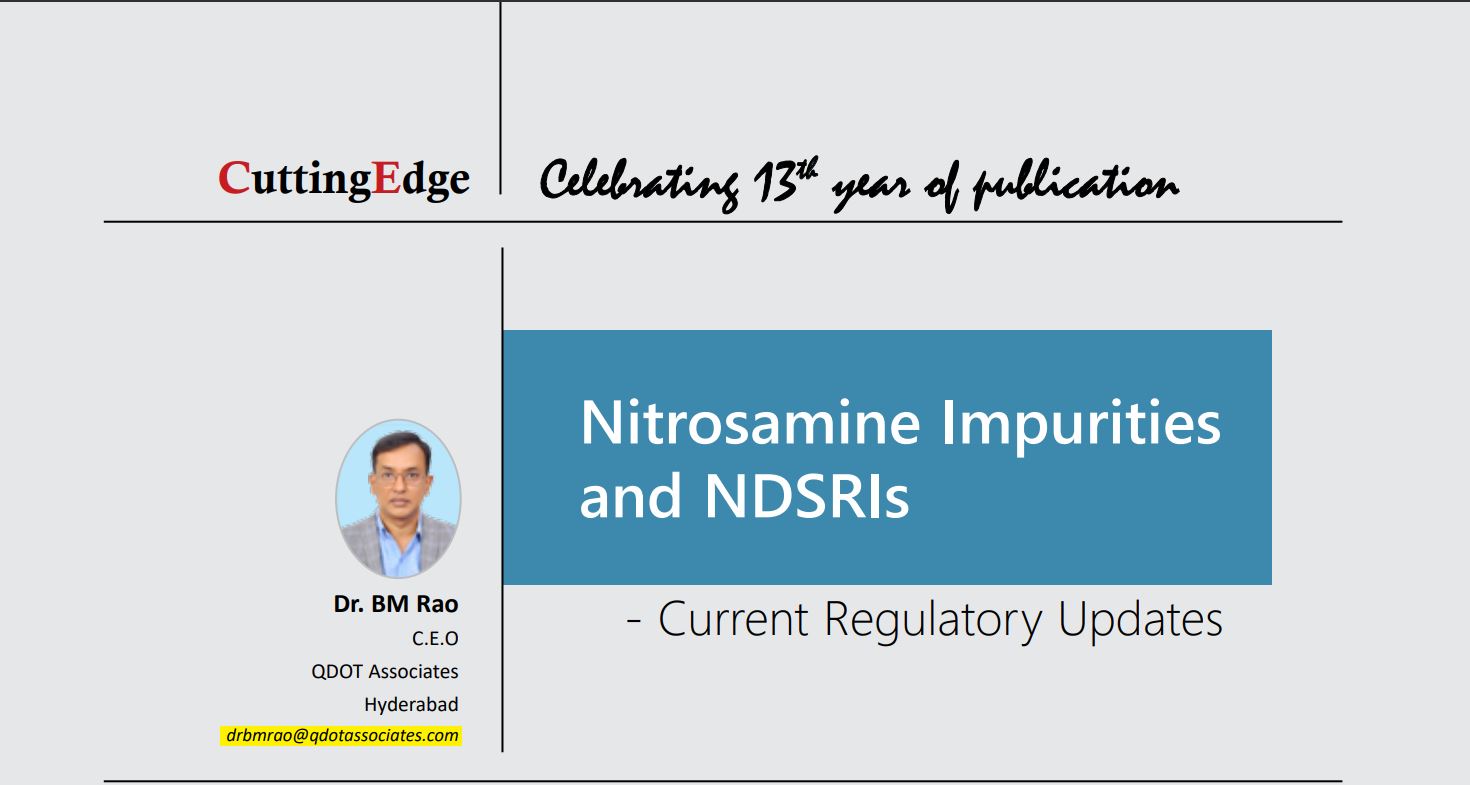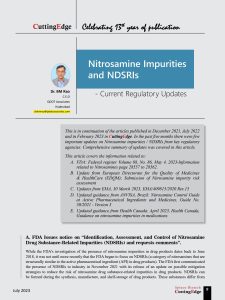Nitrosamine Impurities and NDSRIs

A. FDA Issues notice on “Identification, Assessment, and Control of Nitrosamine Drug Substance-Related Impurities (NDSRIs) and requests comments”.
While the FDA’s investigation of the presence of nitrosamine impurities in drug products dates back to June 2018, it was not until more recently that the FDA began to focus on NDSRIs (a category of nitrosamines that are structurally similar to the active pharmaceutical ingredient (API) in drug products). The FDA first communicated the presence of NDSRIs to industry in November 2021 with its release of an update on possible mitigation strategies to reduce the risk of nitrosamine drug substance-related impurities in drug products. NDSRIs can be formed during the synthesis, manufacture, and shelf-storage of drug products. These substances differ from the small molecule nitrosamine impurities that are identified in the FDA’s Nitrosamine Guidance. Given that NDSRI formation can be triggered by part per-million levels of nitrite impurities (such as those found in commonly used excipients and in water), many drug products are now known to be at risk for nitrosamine formation.
On May 4th, 2023, in its first notice to industry concerning the presence of NDSRIs, the FDA directed manufacturers to use the same processes identified in the FDA’s existing Nitrosamine Guidance for identifying the presence of NDSRIs. The FDA also discussed potential mitigation strategies and encouraged the development of control strategies or design of approaches to reduce NDSRIs to acceptable levels, or to eliminate these impurities. The FDA has acknowledged that “NDSRIs present unique scientific and regulatory challenges for FDA because each NDSRI is unique to the API, and there is limited compound-specific data that is available to inform safety assessments.” The FDA has been working to advance the use of predictive toxicology (e.g., (Q)SAR methodologies) to assess potential mutagenicity and carcinogenicity of NDSRIs. Nevertheless, to date, the FDA has only published acceptable limits based on available safety data for a small percentage of NDSRIs.
The identification of NDSRIs has implications for new and pending drug applications. For example, due to onfidentiality issues, there are constraints on the impurity data that the FDA can disclose, leading to potentially duplicative non-clinical testing and supply chain disruptions. To avoid these issues, the FDA has published information and research that it has generated to support the development of acceptable limits for NDSRIs. The FDA has also encouraged collaboration among stakeholders and international regulatory agencies in the development of such information, including publication of scientific research and test results. This request for collaboration among stakeholders is reiterated in the recent notice.
See the full brochure on “Nitrosamine Impurities and NDSRIs” here
(click the picture to download the brochure)
Source: Cutting Edge brochure “Nitrosamine Impurities and NDSRIs”, published in December 2021, July 2022, and in February 2023


